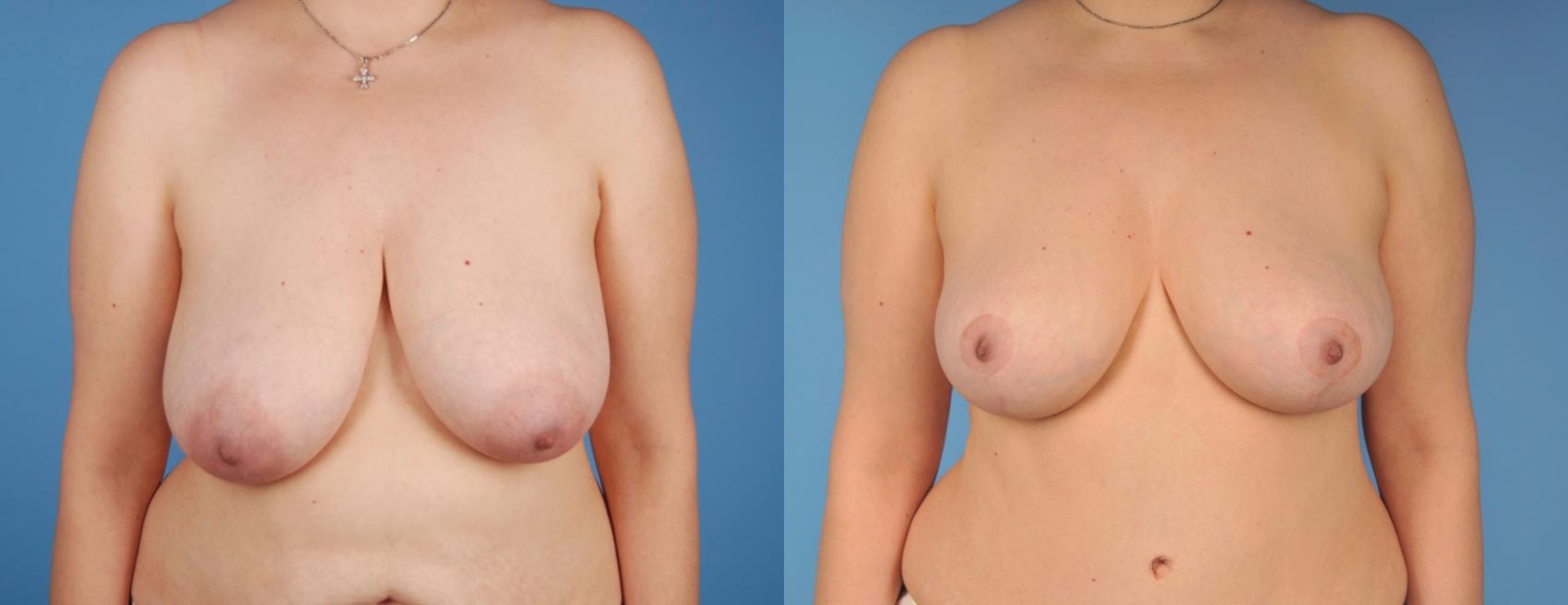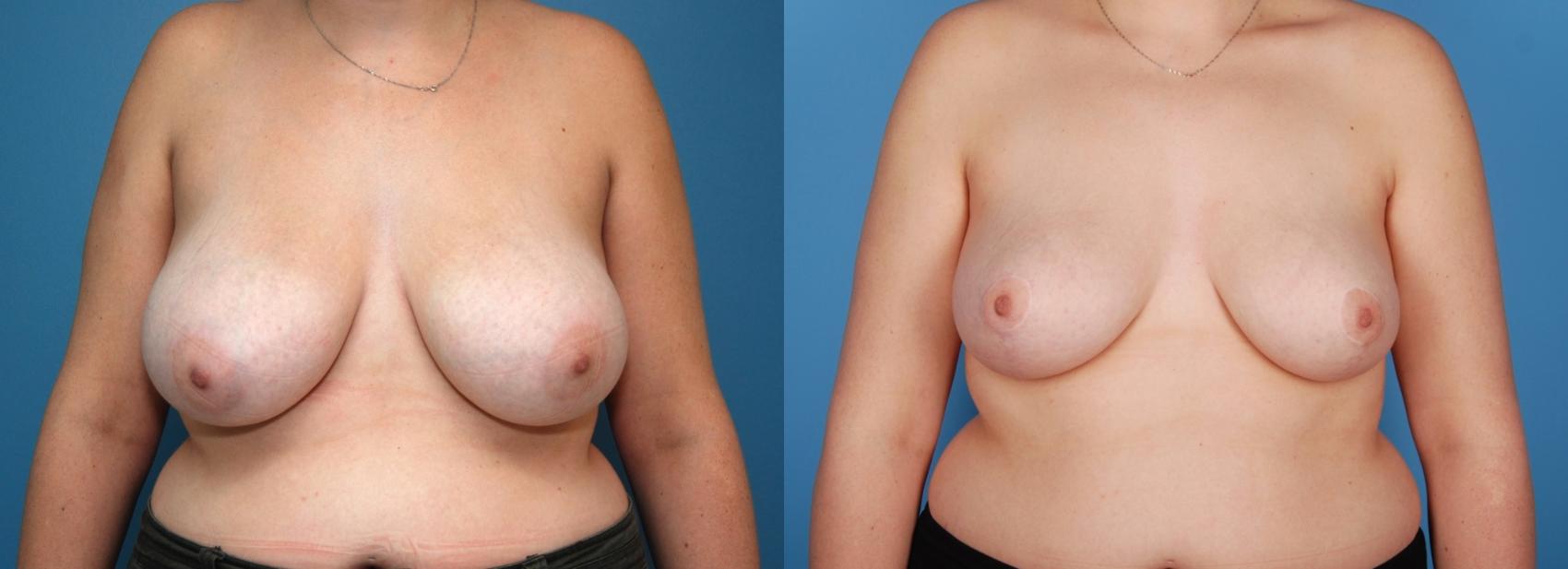Ford Plastic Surgery: Dr. Derek Ford
410-7 St Thomas Street
Toronto, ON M5S 2B7
Phone: (416) 925-7337
Monday–Friday: 8:30 a.m.–4:30 p.m.
Ford Plastic Surgery: Dr. Derek Ford
305-419 King Street West
Oshawa, ON L1J 2K5
Phone: (905) 743-9888
Monday–Friday: 8:30 a.m.–4:30 p.m.
Breast Reduction In The Toronto Area
At Ford Plastic Surgery in Toronto, breast reduction is an especially rewarding procedure for both doctor and patient. Women who consider surgery to reduce the size and weight of their breasts often come to the office after years of emotional and physical discomfort, and they report a near-immediate improvement in back, neck, and shoulder pain. Best of all, the results of breast reduction are typically long-lasting, meaning that these women can enjoy their renewed comfort and mobility for life.
Breast Reduction
Before & After Photos
WARNING:
This feature contains nudity. Please click OK to confirm you are at least 18 years of age and are not offended by such material.
How Much Does It Cost to Have a Breast Reduction?
Breast reduction by our Toronto plastic surgeons is priced at $11,950.
*Price excludes taxes
How Do I Know If I Am a Candidate for Breast Reduction?
Breast reduction may be appropriate for you if any of the following apply to you:
- Your breasts appear disproportionately large compared to the rest of your body
- The weight of your breasts causes back, neck, head, or shoulder pain
- Your nipples and areolas point downward or extend well beyond the breast crease
- One breast is significantly larger than the other
- The size of your breasts makes you feel self-conscious
- The size of your breasts affects your enjoyment of certain physical activities and makes it difficult to find clothes that fit
- You experience chronic or recurring skin irritation beneath your breasts
Dr. Ford, Dr. Hanna, and Dr. Snell have performed breast reduction on patients of all ages, from their mid-teens to their 70s. In general, your underlying health is a more significant consideration than your age.
Surgical breast reduction has one of the highest patient satisfaction rates of any elective procedure.
Your Breast Reduction Consultation
Surgical breast reduction has one of the highest patient satisfaction rates of any elective procedure. A significant part of its success is due to the fact that the surgery treats physical symptoms as well as emotional discomfort. Very often, our surgeons’ breast reduction patients have struggled for years with excessively large, heavy, pendulous breasts.
Your consultation is an important opportunity to share your feelings about your breasts with your surgeon and discuss your ultimate goals. Keep in mind that it’s difficult to plan a surgery around a desired cup size. Instead, your surgeon works with you to plan a customized result based on your own unique proportions. He examines your breasts and documents your measurements, any existing asymmetry, nipple inversion, and other characteristics of your breasts. He notes the width of your breasts as well as lateral (side) fullness, which may also benefit from reduction.
During this appointment, you also discuss the steps of your surgery and your projected recuperation. Our surgeons value transparency, so they also discuss potential complications and your own personal risk assessment.
A Talented Trio
With their expertise in plastic surgery, Dr. Derek Ford, Dr. Steven Hanna, and Dr. Laura Snell create attractive, natural-looking results using advanced techniques. Each are Fellows of the Royal College of Physicians and Surgeons of Canada who provide compassionate patient care.
Learn more about our surgeons
Meet Dr. Derek Ford Meet Dr. Steven Hanna Meet Dr. Laura SnellYour Breast Reduction Procedure
Our surgeons perform breast reduction surgery while you are under general anesthesia. It is an outpatient procedure, so an overnight stay is not typically required. The surgery generally takes about 2½ hours to complete. Before surgery, your surgeon makes marks on your breasts to help guide him during the procedure. Once you are anesthetized and surgery has begun, the surgeon staples your breast skin along a line drawn from your breast fold to your nipple and marks the area. The surgeon marks a new planned nipple and areola location before removing the staples. The surgeon injects the breast with a special fluid that causes the tissue to swell and prevents excessive bleeding.
The surgeon makes incisions around the new areola and along the vertical marks. The surgeon removes breast tissue primarily from the bottom and centre of the breast. He (or she) elevates the upper layers of breast tissue from the chest wall to a higher position on the chest. The nipple and areola are then repositioned without detaching it from its blood supply. In some cases, your surgeon reduces lateral breast tissue using suction-assisted liposuction.
Once both breasts have been treated and your surgeon has evaluated their symmetry, a soft silicone drainage tube is inserted into the surgical pockets to reduce fluid accumulation. The incisions are closed with dissolvable sutures and covered with skin tape, which is removed after about 1 week.
Recuperating After Breast Reduction Surgery
You will likely be able to return home the day of surgery with the help of a friend or loved one. For the first couple of days, you’ll need to rest as much as possible. Soreness and pain are manageable with prescribed medications. You may shower as normal once your surgeon removes your drains, typically during a follow-up appointment between 2 and 5 days after your surgery. However, you’ll need to abstain from heavy lifting and vigorous activity for at least 2 weeks after surgery. You may resume upper-body exercise 6 weeks after surgery. You will also need to wear a soft, non-underwire bra during this time.
Common Complements
Although breast reduction is typically performed on its own, its results can be further enhanced by the addition of abdominoplasty or liposuction. During your consultation, your surgeon helps you plan your procedure to ensure the best possible results from whichever surgeries you choose.
Breast Reduction FAQ
Is the surgery safe?
When performed by an experienced Royal College-certified plastic surgeon, breast reduction is considered a very safe procedure for a carefully screened patient.
How painful is breast reduction surgery?
Most patients experience soreness after surgery that can be controlled with prescription medication. After the first few days, most switch to over-the-counter pain medication like ibuprofen to stay comfortable.
Will I have a noticeable scar?
Every surgery leaves a scar; however, breast reduction incisions are usually not obvious once they heal and fade. The incision around the areola will be concealed along its edge. The vertical incision should fade and flatten over time. Most women say that the reduced breast volume and improved shape are well worth thin, faint scars.
What size breasts qualify for a reduction?
Women whose quality of life is impacted by their large breasts can have a reduction. Qualifying for medical health insurance coverage is more difficult. Providers have their own criteria that must be met.
Is a breast reduction worth it?
This procedure is very rewarding for patients because it reduces both physical and emotional concerns, helping them renew their quality of life.
How old do you have to be before you can get the surgery?
Patients can have breast reduction any time after their breast development is complete, which is usually in their mid-teens.
Can my breasts become enlarged again after I have had a breast reduction?
If the large size of your breasts is affecting your emotional or physical well-being, request a consultation online with one of our surgeons, or call our Toronto office at (416) 925-7337 or our Oshawa office at (905) 743-9888 to schedule your appointment.





